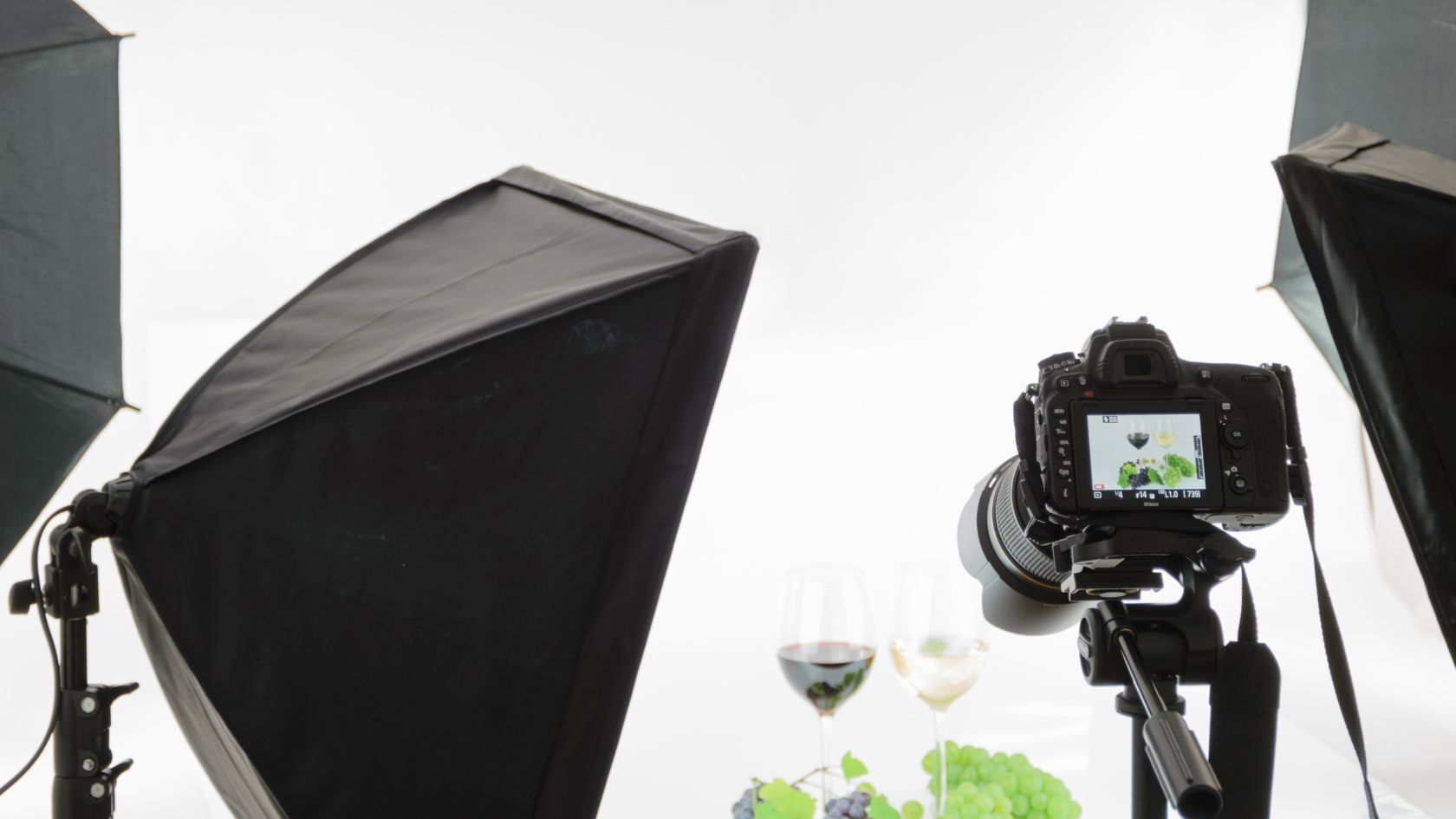
Essential Product Photography Best Practices to Boost Your Sales

Product photography best practices are crucial for any business looking to showcase their merchandise effectively online. High-quality product images directly impact conversion rates, customer trust, and overall brand perception. This comprehensive guide explores professional techniques, equipment recommendations, and strategic approaches to elevate your product photography game.
Why Product Photography Matters
In today’s digital marketplace, customers can’t physically touch or examine products before purchasing. Your product images serve as the critical bridge between online browsing and confident buying decisions. Studies show that 93% of consumers consider visual appearance to be the key deciding factor in purchasing decisions. Creating professional product photos even on a limited budget is possible with the right approach and techniques.
Essential Equipment for Product Photography
While professional setups can be expensive, you don’t need to break the bank to achieve excellent results. Here’s what you’ll need:
Camera Options
- DSLR or Mirrorless Camera: Provides maximum control and quality
- Smartphone: Modern smartphones with good cameras can produce excellent results for many products
- Point-and-Shoot Camera: A budget-friendly middle ground
Lighting Equipment
- Natural Light: Free and flattering for many products
- Continuous Lighting: Affordable LED panels or ring lights
- Strobes/Flashes: For more control and consistent results
- Diffusers: To soften harsh light and reduce shadows
- Reflectors: To bounce light and fill shadows
Background and Props
- Lightbox/Light Tent: Creates even lighting and clean backgrounds
- Backdrop Paper/Fabric: For seamless backgrounds
- Acrylic Sheets: For reflective product displays
- Props: Contextual items that enhance product presentation
Pro Tip: When starting out, prioritize good lighting over expensive camera equipment. Even smartphone photos can look professional with proper lighting.
10 Product Photography Best Practices
1. Maintain Consistent Style
Consistency across your product images creates a professional, cohesive brand experience. Standardize your approach to:
- Background colors and styles
- Lighting direction and intensity
- Product positioning and angles
- Image dimensions and aspect ratios
- Editing style and color treatment
2. Use Proper Lighting Techniques
Lighting makes or breaks product photography. Consider these approaches:
- Soft, Diffused Light: Creates even illumination without harsh shadows
- Three-Point Lighting: Key light, fill light, and backlight for dimensional results
- Window Light: Position products near a window with diffused natural light
- Light Tents: For even, shadowless lighting of small products
3. Capture Multiple Angles
Comprehensive product representation builds customer confidence. Include:
- Front, back, sides, top, and bottom views
- Close-ups of important details and features
- Scale references to show product size
- In-use or lifestyle images showing the product in context
4. Perfect Your White Background Shots
Clean white background images are essential for e-commerce platforms and affiliate marketing. To achieve this:
- Use seamless white paper or fabric backgrounds
- Position lights to eliminate shadows on the background
- Maintain adequate distance between product and background
- Use post-processing to clean up any remaining imperfections
5. Showcase Products in Context
Lifestyle or contextual images help customers visualize using your products:
- Show products in their natural environment
- Demonstrate scale and size relationships
- Highlight key features through actual use
- Create emotional connections through aspirational settings
6. Focus on Sharp, Clear Images
Technical excellence is non-negotiable:
- Use a tripod to eliminate camera shake
- Set appropriate aperture for product depth (usually f/8-f/11)
- Focus manually for precise control
- Use remote shutter release or timer to avoid camera movement
- Consider focus stacking for products with significant depth
7. Optimize Image Size and Format
Balance quality and loading speed:
- Save web images at 72 DPI resolution
- Use JPEG format for most product photos
- Implement PNG format when transparency is needed
- Compress images without visible quality loss
- Implement responsive images for different device sizes
8. Edit Photos Professionally
Post-processing enhances your images:
- Adjust exposure, contrast, and white balance
- Remove dust, scratches, or imperfections
- Create clean, consistent backgrounds
- Enhance colors to match real-life appearance
- Maintain natural-looking results without over-editing
9. Enable Zoom Functionality
Allow customers to examine details:
- Capture high-resolution images that support zooming
- Implement user-friendly zoom tools on your website
- Ensure zoomed areas remain sharp and clear
- Highlight texture and material details
10. Test Across Devices
Ensure consistent appearance everywhere:
- Check images on multiple screens and devices
- Verify color accuracy across different displays
- Test loading times on various connection speeds
- Optimize for mobile viewing experience
Advanced Product Photography Techniques
360-Degree Photography
Create interactive experiences with rotating product views:
- Use a turntable to capture consistent angles
- Take 24-36 images at equal intervals
- Maintain consistent lighting throughout the sequence
- Use specialized software to create the interactive display
Focus Stacking
Achieve front-to-back sharpness for detailed products:
- Take multiple images with different focus points
- Use software to combine the sharpest parts of each image
- Particularly useful for jewelry, watches, and small items
Flat Lay Photography
Perfect for fashion, accessories, and product collections:
- Arrange products from a top-down perspective
- Create visually appealing compositions
- Use negative space effectively
- Incorporate complementary props and textures
Budget-Friendly Product Photography Tips
Quality product photography doesn’t always require expensive equipment. Here are some cost-effective approaches:
- DIY Lightbox: Create one using a cardboard box and white paper
- Window Light: Position products near a north-facing window
- Smartphone Photography: Use portrait mode and third-party camera apps
- Reflector Cards: Use white foam board to bounce light
- Free Editing Software: GIMP, Canva, or mobile apps like Snapseed
- DIY Backdrops: Use poster board, fabric, or vinyl flooring samples
Common Product Photography Mistakes to Avoid
- Inconsistent Lighting: Creates unprofessional variation across products
- Poor Focus: Blurry images suggest carelessness
- Distracting Backgrounds: Take attention away from the product
- Inaccurate Colors: Lead to customer returns and dissatisfaction
- Too Few Angles: Fail to show the complete product
- Over-Editing: Creates unrealistic expectations
- Low Resolution: Prevents customers from seeing details
Conclusion
Implementing these product photography best practices will significantly enhance your online presence and boost conversion rates. Remember that consistency, quality, and attention to detail are the foundations of effective product imagery. Start with the basics, focusing on good lighting and clean compositions, then gradually incorporate more advanced techniques as your skills develop. With the right approach, even businesses with limited resources can create professional product photography that drives sales and builds brand credibility.
Whether you’re photographing products for an e-commerce store, social media, or print catalogs, these principles will help you create images that accurately represent your products and entice customers to make purchases. Remember that in the digital marketplace, your product photography is often the first and most important impression you make on potential customers.